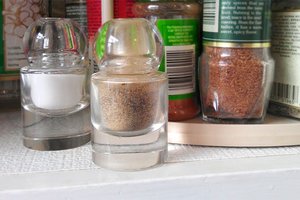
News that cell phones contain more germs than your toilet is no surprise to us. Your home contains scores of things and places that are germier than your commode.
In fact, toilets don’t harbor as much bacteria as you might think. You clean and disinfect them regularly, and their hard, dry surfaces aren’t easy places for bacteria to grow.
Tip: Close toilet seats before flushing to prevent bacteria-laden water from splashing onto floors and mats.
Here are places in the home where germs love to grow:
Kitchen sponge or dish rag: A germ study by NSF International (a non-profit research group) found that sponges are the “germiest” place in your home — even more than toothbrush holders. Not only do bacteria feast and grow on your kitchen sponge, but you spread them all over the kitchen when you wipe down counters and the stove. To clean, the USDA recommends running sponges through a dishwasher cycle, or placing them the microwave for 1-2 minutes.
Kitchen sink: Germs multiply — especially E. coli — when you soak dishes or scrape them on the way to the dishwasher, germ experts say. So make sure you sanitize your sink with bleach and water (1:10 solution) every day. Don’t forget to sanitize the drain plug, too.
Salt-and-pepper shakers: They’re loaded with cold viruses, according to a 2008 University of Virginia study. Of 160 surfaces tested for rhinovirus, salt-and-pepper shakers were the biggest germ hot spots, followed by bathroom faucets, television remotes, refrigerator door handles, and door knobs.
Coffee tables: When you rest your tired feet on your coffee table, you could be spreading salmonella and other fecal bacteria that you bring in from outside, says Charles Gerber, a University of Arizona microbiologist. So, leave shoes at the door when you come inside. And wipe table surfaces with a disinfectant.
Here are places in the home where germs love to grow:
Kitchen sponge or dish rag: A germ study by NSF International (a non-profit research group) found that sponges are the “germiest” place in your home — even more than toothbrush holders. Not only do bacteria feast and grow on your kitchen sponge, but you spread them all over the kitchen when you wipe down counters and the stove. To clean, the USDA recommends running sponges through a dishwasher cycle, or placing them the microwave for 1-2 minutes.
Kitchen sink: Germs multiply — especially E. coli — when you soak dishes or scrape them on the way to the dishwasher, germ experts say. So make sure you sanitize your sink with bleach and water (1:10 solution) every day. Don’t forget to sanitize the drain plug, too.
Salt-and-pepper shakers: They’re loaded with cold viruses, according to a 2008 University of Virginia study. Of 160 surfaces tested for rhinovirus, salt-and-pepper shakers were the biggest germ hot spots, followed by bathroom faucets, television remotes, refrigerator door handles, and door knobs.
Coffee tables: When you rest your tired feet on your coffee table, you could be spreading salmonella and other fecal bacteria that you bring in from outside, says Charles Gerber, a University of Arizona microbiologist. So, leave shoes at the door when you come inside. And wipe table surfaces with a disinfectant.
Read more: http://www.houselogic.com/home-advice/maintenance-repair/what-has-most-germs-your-home/#ixzz34uTapTFy
No comments:
Post a Comment